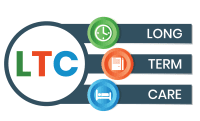In September, OJIN: The Online Journal of Issues in Nursing published six new articles on the topic “Substance use disorders and related concerns: Perspectives from nurses.” Here are some highlights.
Tobacco use, a leading cause of disability and premature death in the United States, disproportionately affects vulnerable populations and minority groups. Author Joelle T. Fathi, DNP, RN, ARNP, ANP-BC, CTTS, NCTTP, a Washington State Nurses Association member, covers how nurses can help patients quit.
Author Angela Clark, PhD, RN, and colleagues discuss their study to develop an iBook intervention for teaching nursing staff how to safely intervene during opioid overdoses that occur outside of the emergency department.
Finding appropriate treatment modalities for opioid use disorder has become a national priority. Mercy Mumba, PhD, RN, an Alabama State Nurses Association member, and colleagues, describe the development of a manual-based treatment protocol for use in group settings with individuals who are on medications to treat the disorder.
Sylvia May, DNP, FNP-C, an ANA-Illinois member, and colleagues present a study that explored barriers to integrating Prescription Drug Monitoring Program data into electronic health records across care settings for providers who prescribe controlled substances in Washington State.
Commercial sexual exploitation of children is a crime that can be associated with illegal substance use. Authors Simone E. Jaeckl, MSN, RN, and Kathryn Laughon, PhD, RN, FAAN, both Virginia Nurses Association members, review recruitment tactics, health consequences, clinical care, and implications for nursing practice and research.
Screening, brief intervention, and referral to treatment (SBIRT) for substance use disorder has been implemented in clinical care for over 40 years, but providers still don’t incorporate into daily practice. The authors discuss SBIRT benefits, barriers, training, and individual and system level factors.
Read the new, members-only content at ojin.nursingworld.org.


















